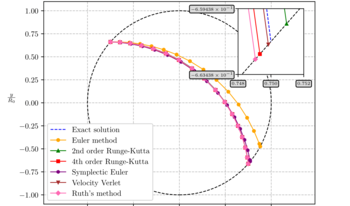
The primary objective of this paper is to demonstrate the utility of symplectic numerical techniques for ray tracing within gradient-index media. The relevant mathematics are explained in brief, deriving the optical Hamiltonian independently of the Lagrangian optical formalism before constructing a symplectic ray tracing algorithm. Numerical experiments with the Luneburg and Maxwell fish-eye lenses compare the effectiveness of symplectic methods with standard numerical integration techniques, challenging the idea that the increased accuracy of higher-order numerical methods justifies their elevated computational cost. Further uses for symplectic ray tracing are also discussed.

In this article, we propose a comprehensive objective metric for estimating digital camera system performance. Using the DXOMARK RAW protocol, image quality degradation indicators are objectively quantified, and the information capacity is computed. The model proposed in this article is a significant improvement over previous digital camera systems evaluation protocols, wherein only noise, spectral response, sharpness, and pixel count were considered. In the proposed model we do not consider image processing techniques, to only focus on the device intrinsic performances. Results agree with theoretical predictions. This work has profound implications in RAW image testing for computer vision and may pave the way for advancements in other domains such as automotive or surveillance camera.

In order to explore the design space of a new, potentially unconventional, sensor or to optimize sensor characteristics for a given computer vision application, an image acquisition process simulator has been designed. Its aim is to be simple and modular, yet complete and accurate enough to match the physical phenomena involved. The approach has been described in this paper to highlight the different steps of the acquisition process and to explain the implementation choices and the hypotheses that were made. The simulator has been tested on images of point sources, on simulated test patterns and on real high definition pictures and has proven realistic.